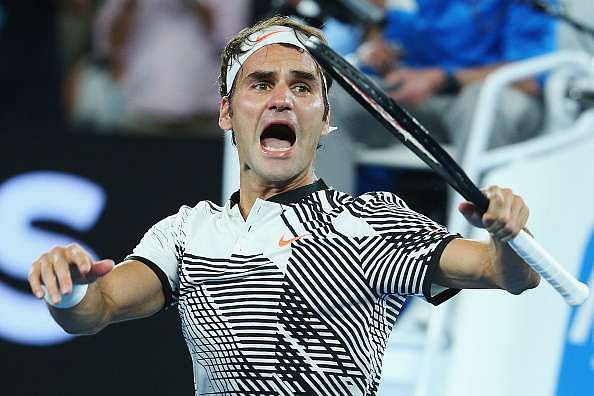
Australian Open 2017: Federer takes on Mischa Zverev in battle of vintage tennis
Today is perhaps one of those matches. Will the icon Roger Federer make it past Mischa Zverev, who defeated Andy Murray here? That is the big question here, and one everyone wants the answer to.
Even as all eyes have been on younger brother Sascha, Mischa Zverev has quietly been making his own significant impact. And in his biggest win yet, he took four sets to dispatch World No. 1 Andy Murray from a tournament where, after the exit of Novak Djokovic, the No. 1 had been the favourite to win.
And he did so with a serve-and-volley game that Murray appeared unable to make sense of. Flummoxed by Zverev’s play, Murray dropped serve eight times in that match.
Zverev, perhaps, is a hark back to the tennis days of old – and that is the game he has been bringing out. Constant serve-and-volley, on the first serve or the second. In an age where most players are sticking to the baseline, playing deep, big shots, Zverev did not.
Everyone’s an aggressive baseliner. Andy Murray included. Novak Djokovic, among the greatest, is both aggressive and defensive. He can serve-and-volley too – but rarely does.
It’s a strategy we haven’t seen in a long time, despite some of the best the sport has ever witnessed adopting that strategy.
Boris Becker. Pete Sampras. John McEnroe. Stefan Edberg. And the man after whom center court is named – Rod Laver himself.
Still, every young (and old) player today plays from the baseline – and it’s become one of the ‘unwritten rules’ of tennis, one might argue. Even players who started off with the classic serve and volley have moved since to baseline play. One of those men is Zverev’s quarter-final opponent, Roger Federer, one of the best proponents of serve-and-volley still active.
But even Federer has moved on to baseline play to combat newer and younger opponents.
Had Zverev played from the baseline, it is doubtful he would have defeated Andy Murray. The Scot reached World No. 1 winning most of his points from the baseline, and on a good day he would have won this easily.
Murray was not himself that day, and this new, much-unused, nearly obsolete technique was difficult to deal with. The German rushed the net 150 times, winning 55% of his points at the net.
Chip-and-charge helped Zverev significantly. Anticipating longer rallies, Murray was blocked by Zverev’s chip-and-charge and arrested shot length. Zverev moved frequently into the net to return, winning a whopping 119 points on serve and volley.
Now he plays Federer, who started off his career as a serve-and-volleyer against the best serve-and-volleyers.
He’s been there, and done it all, and it is not as likely Zverev will be able to flummox Federer the same way. Yes, the Swiss has adapted to aggressive baselining in recent years, but fans have seen more than a glimpse of the old Federer in his last few games.
Perhaps we could go back even further to his earlier years, where we saw Federer charge the net against the likes of Sampras, and even in his early days against the defensive baseline-favouring Rafa Nadal.
One thing is for sure – this one is not going to go down without a fight.
Federer vs Zverev – what are the chances?
Technique and shot-making aside – giving Federer, at 35 and baying for blood with an 18th Grand Slam nearly in sight, a serve-and-volleying opponent promises for some great tennis. With experience on his side and a renewed energy and momentum, fans and pundits would give this one firmly to Federer.
The two have only played each other twice in the past, most recently in 2013 at the Gerry Weber Open in Halle, Germany – on Federer’s favourite surface, grass. That ended in a double bagel for Zverev.
Fun fact – Last year, the younger Zverev brother – Sascha – ousted Federer from the semi-finals at that tournament.
The only other time Mischa Zverev played Federer was in 2009, at the Rome Masters. That had ended in a straight sets win for Federer – but again, it was played on clay.
A hard-court match between these two would be a new beast entirely.
It will be a treat to watch some 80s style tennis again, and especially watching serve-and-volley on a court named for the great Rod Laver.
This one looks to be with Federer, perhaps in four sets given the charge Zverev has mounted and the momentum he no doubt has.
What does this mean for tennis?
The fact that a player not only brought back the serve and volley, but used it to thoroughly outclass the World No. 1, means that children, and younger players all over the world, will no longer ignore the apparently long-lost technique.
It means, for tennis watchers, that more and more players will try different techniques and not charge the net only occasionally.
It means that the net is exciting again.
